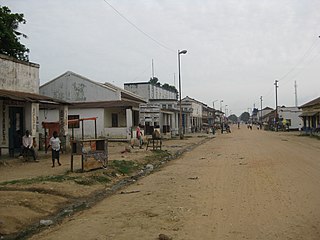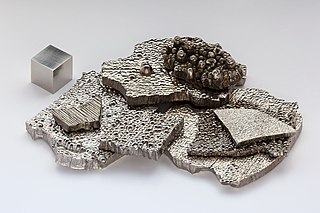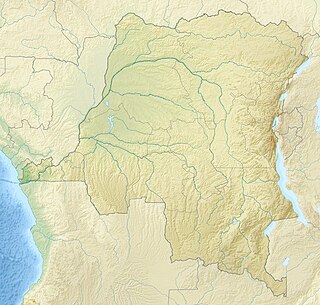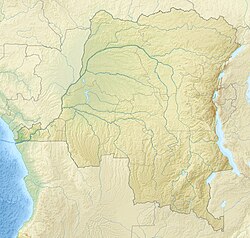Mining
Kampene is in the west of the Twangiza-Namoya gold belt. The area has long been known for deposits of cassiterite, diamonds and gold. Mining in the forest region around Kampene dates back to the colonial period, when it was undertaken by the Compagnie Belge des Mines (COBELMIN). The town of Kampene was founded in the colonial era to support gold, cassiterite and coltan mining operations. The Belgians installed a power plant, built an airstrip, and built schools, churches and a hospital. Mining continued despite the upheavals that followed independence.
The DRC government wants to formalize gold mining, which is an important part of the eastern DRC economy, so as to dry up funding for illegal armed groups. A study of artisanal gold mines around Kampene was conducted in July / August 2014 as part of this process. Issues included illegal taxation by the security forces and by administrative and local authorities, bribes to conceal or underestimate production, and the presence of armed groups. The miners were organized into cooperatives such as CEAMI (248 miners), COMIKABA (137 miners), COMIZO (95 miners), COMILU (92 miners) and other smaller groups. Formal companies included BITMAK, with a diamond exploration permit, and Kampene Mining SPRL, which was planning to start mining using industrial techniques. Kampene Mining stated that they wanted to work with the cooperatives and buy some of their output, but there were virtually no links between the cooperatives and the companies that own the areas.
The Kampene Gold Pilot is a German-Congolese cooperation project that aims to encourage legal gold supply chains for artisanal and small-scale gold mining around Kampene town. This area has over 10,000 informal gold miners, which have organized themselves into nine cooperatives and operate 32 gold mines. It the industry can be more open in tracing movement of gold and reporting transactions, there may be progress towards safer working conditions and reduced damage to the environment. In October 2019 an illegal gold mine in Kampene collapsed, killing at least 21 people.

The economy of the Democratic Republic of the Congo has declined drastically since the mid-1980s, despite being home to vast potential in natural resources and mineral wealth.

Coltan is a dull black metallic ore from which the elements niobium and tantalum are extracted. The niobium-dominant mineral in coltan is columbite, and the tantalum-dominant mineral is the tantalite.

Maniema is one of 26 provinces of the Democratic Republic of the Congo. Its capital is Kindu.

The Ulindi River is a tributary of the Lualaba River in the Democratic Republic of the Congo (DRC). There is a proposal to build a hydroelectric power plant on the river to power a gold mining project.

The mining industry of the Democratic Republic of the Congo plays a significant role in the world's supply of cobalt, copper, diamond, tantalum, tin, gold and produces over 70% of globally produced cobalt. It is the Democratic Republic of the Congo's largest source of export income.

Conflict resources are natural resources extracted in a conflict zone and sold to perpetuate the fighting. There is both statistical and anecdotal evidence that belligerent accessibility to precious commodities can prolong conflicts. The most prominent contemporary example has been the eastern provinces of the Democratic Republic of the Congo (DRC), where various armies, rebel groups, and outside actors have profited from mining while contributing to violence and exploitation during wars in the region.
Bisie is a tin deposit in the Walikale territory of the province of North Kivu in the Democratic Republic of the Congo (DRC), although the name is also sometimes used for the nearby village of Manoire. The mine was formerly an illegal source of an estimated 15,000 tons of tin, or 4% of global production. In early 2018 artisanal mining activity has stopped, and Alphamin Resources Corp., an exploration company, based in Mauritius, is leading an exploration of the site.

Manono is a town and territory in Tanganyika Province, Democratic Republic of the Congo.

An artisanal miner or small-scale miner (ASM) is a subsistence miner who is not officially employed by a mining company, but works independently, mining minerals using their own resources, usually by hand.

Pweto Territory is a territory in the Haut-Katanga Province of the Democratic Republic of the Congo (DRC). The headquarters are in the town of Pweto.

Mutoshi Mine is a copper mine in Katanga Province, Democratic Republic of the Congo. As of 2011 it was 70% owned by Anvil Mining and 30% by the state-owned Gécamines. The mine was placed on care and maintenance in late 2008.
Afrimines Resources is a company based in the Democratic Republic of the Congo that has precious metal mining rights in various deposits. One is a 5,500 square kilometres (2,100 sq mi) area within the Kilo Moto area of the northeastern provinces of Haut-Uélé and Ituri. The company was established in 2003.
Sodimico is a state-owned mining company in the Democratic Republic of the Congo (DRC).
Martin Kabwelulu Labilo is a politician in the Democratic Republic of the Congo. He is a member of the Parti Lumumbiste Unifié (PALU). He was appointed Minister of Mines on 5 February 2007 in the government led by Antoine Gizenga, and retained this post through the reshuffle of 25 November 2007.

Mongbwalu is a small town in the Djugu Territory of the Ituri Province in the Democratic Republic of the Congo.
Ivanhoe Mines is a Canadian mining company focused on advancing its three principal projects in Southern Africa: the development of new mines at the Kamoa-Kakula copper discoveries in the Democratic Republic of Congo (DRC) and the Platreef palladium-platinum-nickel-copper-rhodium-gold discovery in South Africa; and the extensive redevelopment and upgrading of the historic Kipushi zinc-copper-germanium-silver mine, also in the DRC. Ivanhoe also is exploring for new copper discoveries on its wholly owned Western Foreland exploration licences in the DRC, near the Kamoa-Kakula Project.
Nova Dies British Virgin Islands (BVI) International Business Company (IBC) functions as a business shell covering a consortium of international trusts and other asset managers investing in natural resources and mining industry. Its shares are controlled through a complex trust scheme and its management is nominally performed not by a Board of Directors but by a Management Company, subsidiary of Nova Dies itself. However, it is speculated that Nova Dies scheme mostly covers investments of Colombian, Dutch, Greek and Congolese interests. Founded in 2010, its official seat exists in the offshore haven of the Island of Tortola in British Virgin Islands, but its business core is located in Piraeus Greece. There, Nova Dies retains a Customs and Transportation Management Representative Office, as most of Nova Dies non-financial operations concern imports of coltan and other minerals through the sea route Dar es Salaam (Tanzania)-Port of Piraeus. In Piraeus, the mineral shipments are unloaded and distributed throughout Eastern Europe by a network of trans-Balkan land routes coordinated from Piraeus. Nova Dies also operates a secondary Cargo Management Office in the Port of Rotterdam Free Zone (Netherlands), a Financial Management Office in Nicosia (Cyprus) and an Investment Management Office in Madeira International Off-Shore Business Centre (Portugal). A key characteristic of Nova Dies is that it employs no operational or managerial staff. It is rather managed by a network of independent agents, lawyers, trustees and representatives. This network further intermediates between the company and numerous independent contractors hired for executing the actual corporate operations. Furthermore, Nova Dies does not retain any assets itself, as it only functions as a management company performing investments on behalf of its clients, exercising the ownership and management rights of other corporate and trust schemes on their own corporate and financial assets and administrating networks of third affiliated companies.
The Compagnie Minière des Grands-Lacs (MGL) was a Belgian mining company active in the Belgian Congo and then in the Democratic Republic of the Congo. It was established in 1923 and in 1976 merged with other companies into the Société Minière et Industrielle du Kivu (SOMINKI). The company was active in the eastern regions of Maniema and Kivu, with its main center at Kamituga in today's South Kivu. It extracted gold, tin and other minerals.

The Twangiza-Namoya gold belt is a belt of gold deposits in the east of the Democratic Republic of the Congo.

Twangiza Mine is an open pit gold mine in South Kivu province of the Democratic Republic of the Congo (DRC), which started operations in 2012. Production has been disrupted by attacks from rebel militias.











